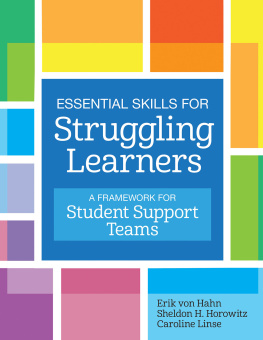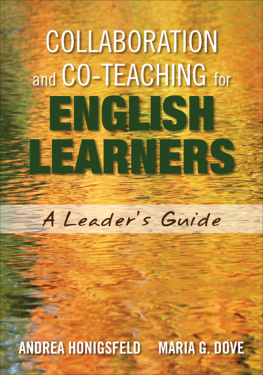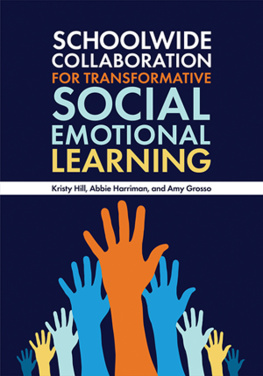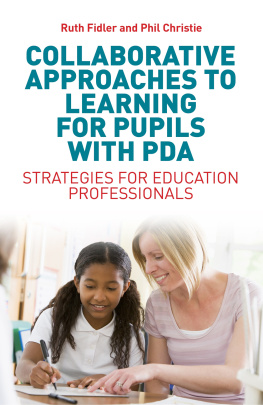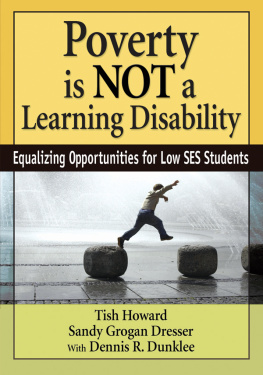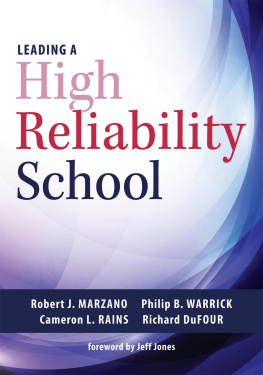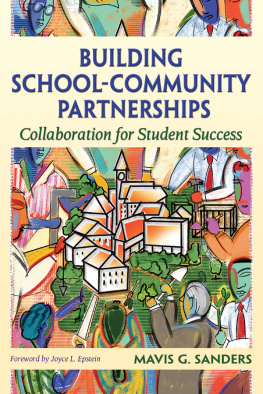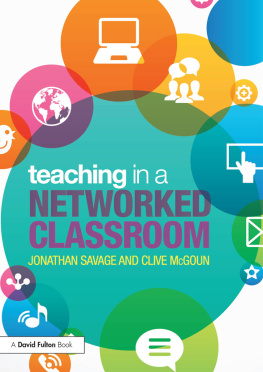Collaboration Among Professionals, Students, Families, and Communities
Collaboration Among Professionals, Students, Families, and Communities provides a foundation for understanding concepts of collaborative learning along with strategies for the application of collaborative skills in teaching. The book moves logically from issues of macro-collaboration (district and school) to micro-collaboration (individual student focus and co-teaching) in K12 environments before concluding with strategies for family and community collaboration. Significant emphasis is placed on knowledge, skills, and teaching models for pre-service and in-service teachers in general education, special education, and of diverse students including English Learners.
Each chapter includes meaningful pedagogical features such as:
- Learning objectives
- A case study illustrating the implementation of information presented
- A case study challenging the reader to apply the information learned in the chapter
- Study questions for readers in Comprehension Checks at key points in the chapter
- Highlights of major points in a chapter summary for aid in studying content
- University, school, and community-based application activities
A companion website features additional resources, including PowerPoint presentations, practice tests, suggested video and Internet resources, and advanced application activities.
Stephen B. Richards is Associate Professor and Coordinator of Intervention Specialist Programs, School of Education and Health Sciences, University of Dayton, USA.
Catherine Lawless Frank is Visiting Professor of Special Education and Early Childhood Education, School of Education and Health Sciences, University of Dayton, USA.
Mary-Kate Sableski is Assistant Professor of Literacy and Special Needs and Director of the Dyslexia Certificate Program, School of Education and Health Sciences, University of Dayton, USA.
Jackie M. Arnold is Assistant Professor of Reading and Early and Middle Childhood Education, School of Education and Health Sciences, University of Dayton, USA.
Collaboration Among Professionals, Students, Families, and Communities
Effective Teaming for Student Learning
Stephen B. Richards
Catherine Lawless Frank
Mary-Kate Sableski
Jackie M. Arnold

First published 2016
by Routledge
711 Third Avenue, New York, NY 10017
and by Routledge
2 Park Square, Milton Park, Abingdon, Oxon OX14 4RN
Routledge is an imprint of the Taylor & Francis Group, an informa business
2016 Taylor & Francis
The right of Stephen B. Richards, Catherine Lawless Frank, Mary-Kate Sableski, and Jackie M. Arnold to be identified as the authors of this work has been asserted by them in accordance with sections 77 and 78 of the Copyright, Designs and Patents Act 1988.
All rights reserved. No part of this book may be reprinted or reproduced or utilized in any form or by any electronic, mechanical, or other means, now known or hereafter invented, including photocopying and recording, or in any information storage or retrieval system, without permission in writing from the publishers.
Trademark notice: Product or corporate names may be trademarks or registered trademarks, and are used only for identification and explanation without intent to infringe.
Library of Congress Cataloging-in-Publication Data
Names: Richards, Steve, 1954 author.
Title: Collaboration among professionals, students, families, and communities : effective teaming for student
learning / Stephen B. Richards, Catherine Lawless Frank, Mary-Kate Sableski, and Jacqualine M. Arnold.
Description: New York, NY : Routledge, 2016. | Includes bibliographical references and index.
Identifiers: LCCN 2015044120 | ISBN 9781138886490 (hardback) | ISBN 9781138886506 (pbk.) |
ISBN 9781315714783 (ebook)
Subjects: LCSH: TeachersProfessional relationships. | Teacher-student relationships. |
Parent-teacher relationships. | Communication in education. | Group work in education. |
Teaching teams. | EducationParent participation. | Community and school.
Classification: LCC LB1775 .R496 2016 | DDC 371.1dc23
LC record available at http://lccn.loc.gov/2015044120
ISBN: 978-1-138-88649-0 (hbk)
ISBN: 978-1-138-88650-6 (pbk)
ISBN: 978-1-315-71478-3 (ebk)
Typeset in Minion
by Apex CoVantage, LLC
We would like to dedicate this text to:
Ron Taylor, friend and mentor;
Geoff, Christopher, and Jaidyn with much love;
Matt, for the love and support;
Greg Arnold, always my supporter;
Steve Richards, friend and wonderful mentor.
Contents
STEPHEN B. RICHARDS
STEPHEN B. RICHARDS
CATHERINE LAWLESS FRANK
CATHERINE LAWLESS FRANK
CATHERINE LAWLESS FRANK
MARY-KATE SABLESKI
STEPHEN B. RICHARDS
MARY-KATE SABLESKI
MARY-KATE SABLESKI
MARY-KATE SABLESKI AND CATHERINE LAWLESS FRANK
MARY-KATE SABLESKI
CATHERINE LAWLESS FRANK
STEPHEN B. RICHARDS
JACKIE M. ARNOLD
JACKIE M. ARNOLD
JACKIE M. ARNOLD
JACKIE M. ARNOLD AND STEPHEN B. RICHARDS
In this new text, you will find 17 chapters that logically progress from macro-collaboration at the district and school levels to micro-collaboration among educators for working with individual students and co-teaching. The text concludes with strategies for working with families, including those from diverse cultural/linguistic populations. We also address collaborating with community members.
Additionally, what we believe is exciting about this text is it is designed for use in courses with general and special educators. The text includes the information general educators need to know about special education law and the various disability categories. This also serves as an excellent introduction or review for special educators. The overall content in other chapters is relevant to general and special educators.
The knowledge and strategies presented are user-friendly, well-referenced, and accessible reading for undergraduate or graduate teachers in training. While U.S. schools are referenced, you will find references to research from other countries as well. The knowledge and strategies are applicable in schools outside the U.S.
The companion website supports instructors and students alike with presentations for each chapter, quizzes, chapter outlines, and additional resources. Each chapter in the text includes chapter objectives, a detailed chapter summary, an illustrative case study, and an application case study. Comprehension Checks that include study questions are at key points in the chapters. Each chapter concludes with application activities applicable in university classrooms as well as in schools or communities. References are at the end of each chapter, making it easy to locate specific resources for interested readers.
We believe you will find this new text to be comprehensive and practical in its content and presentation.
Stephen B. Richards
Chapter Objectives
Following reading the chapter, students should:
- Identify similarities and differences in collaboration, teaming, and consultation
- Explain the principles and practices for collaboration
- Cite examples of positive and negative collaboration


